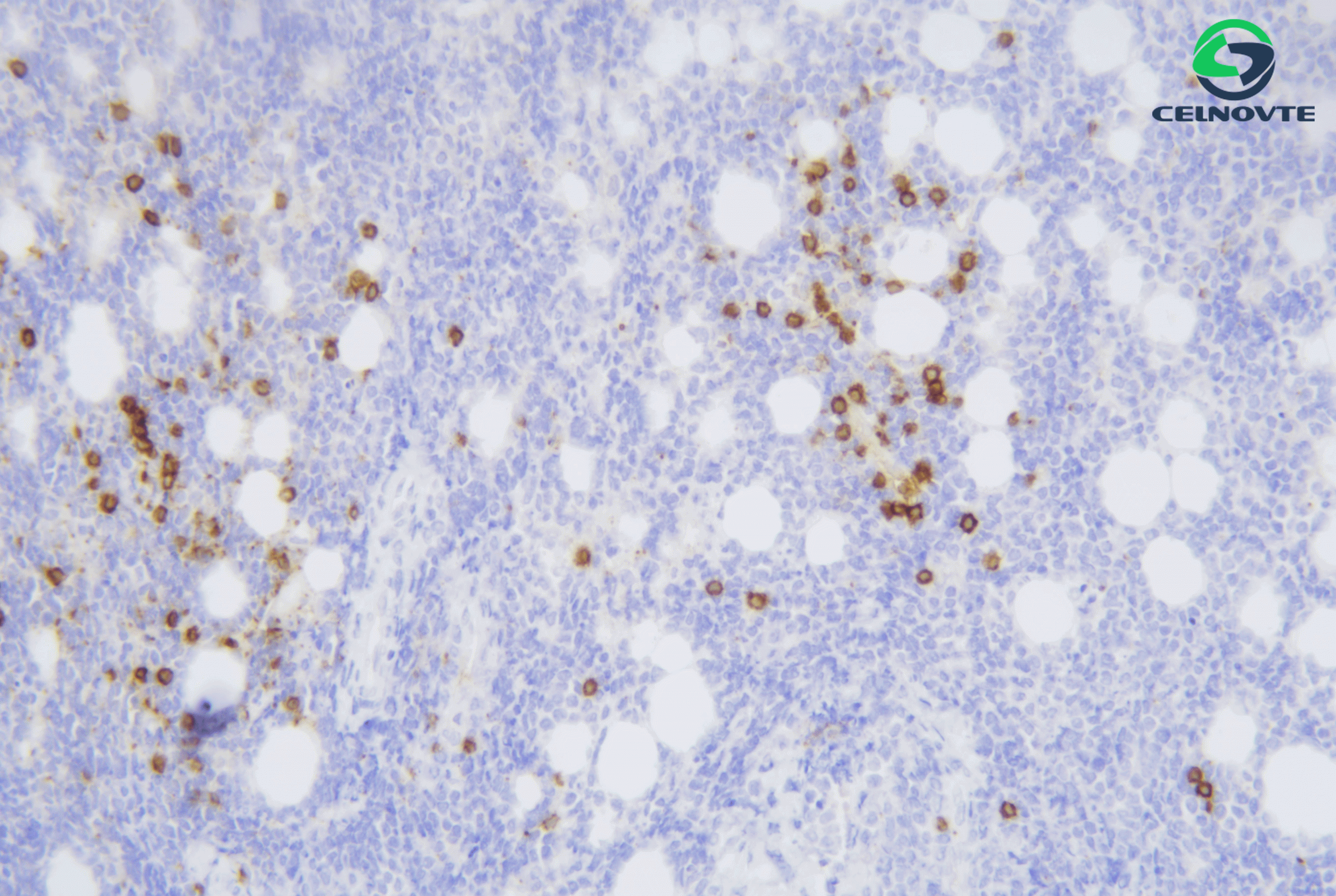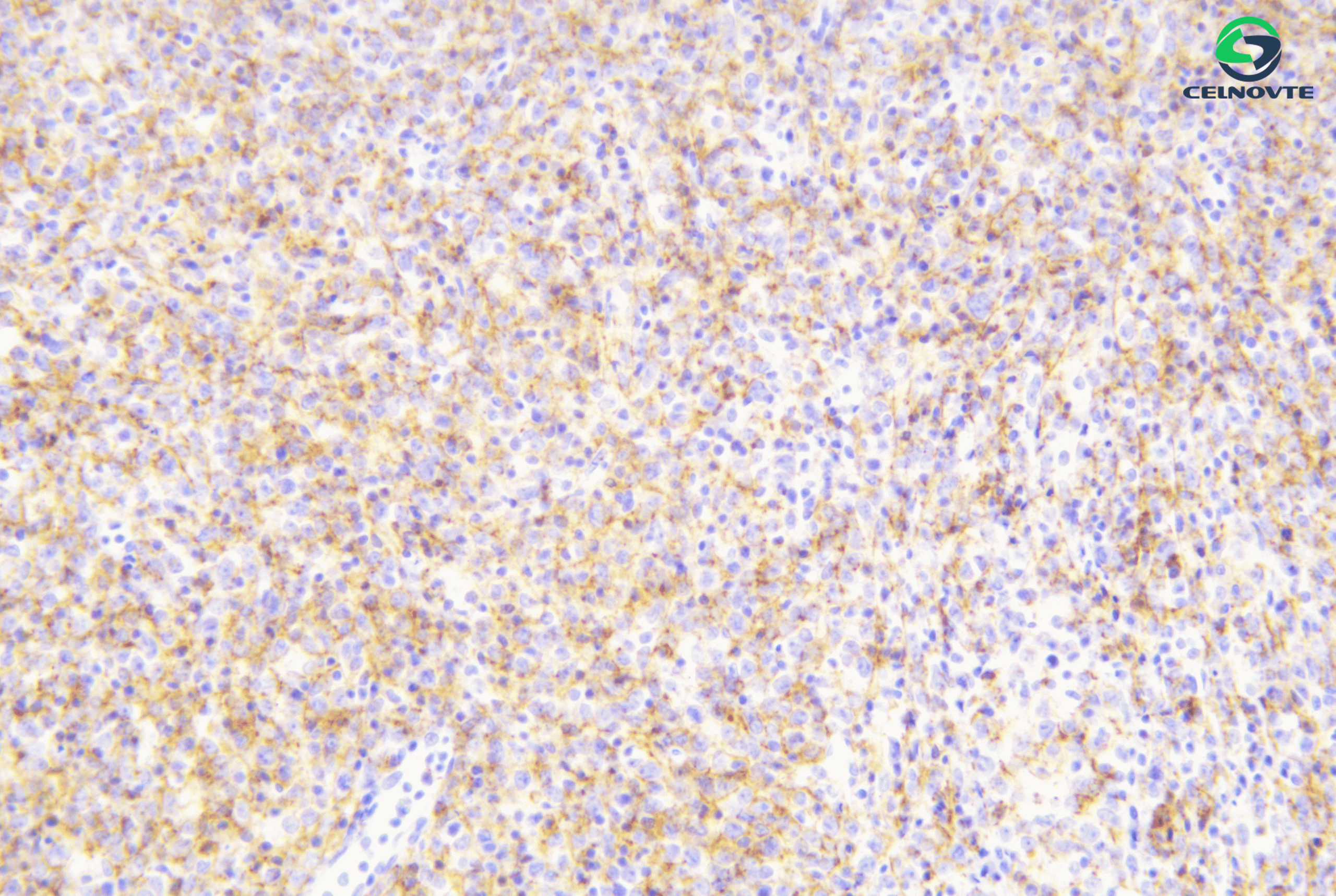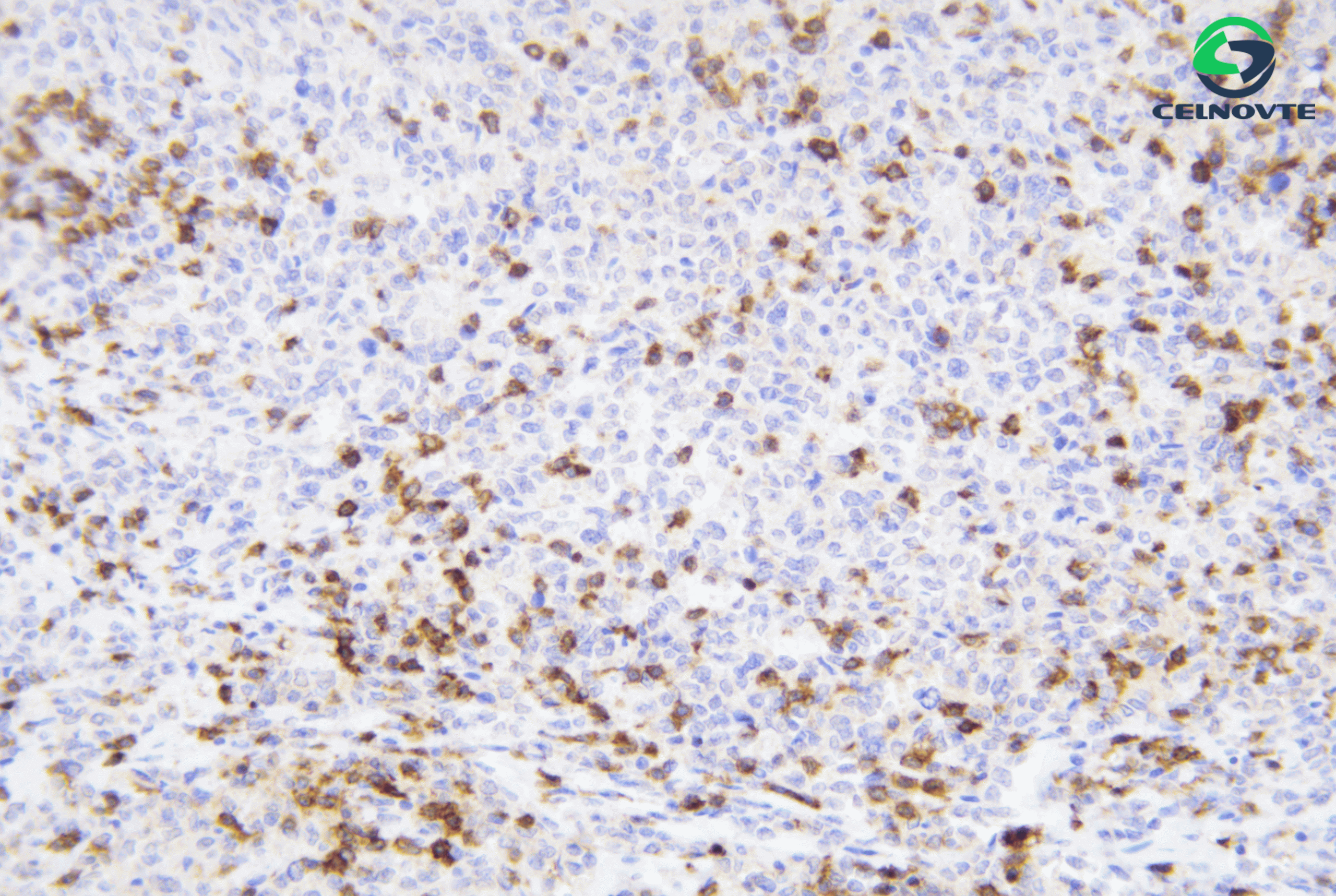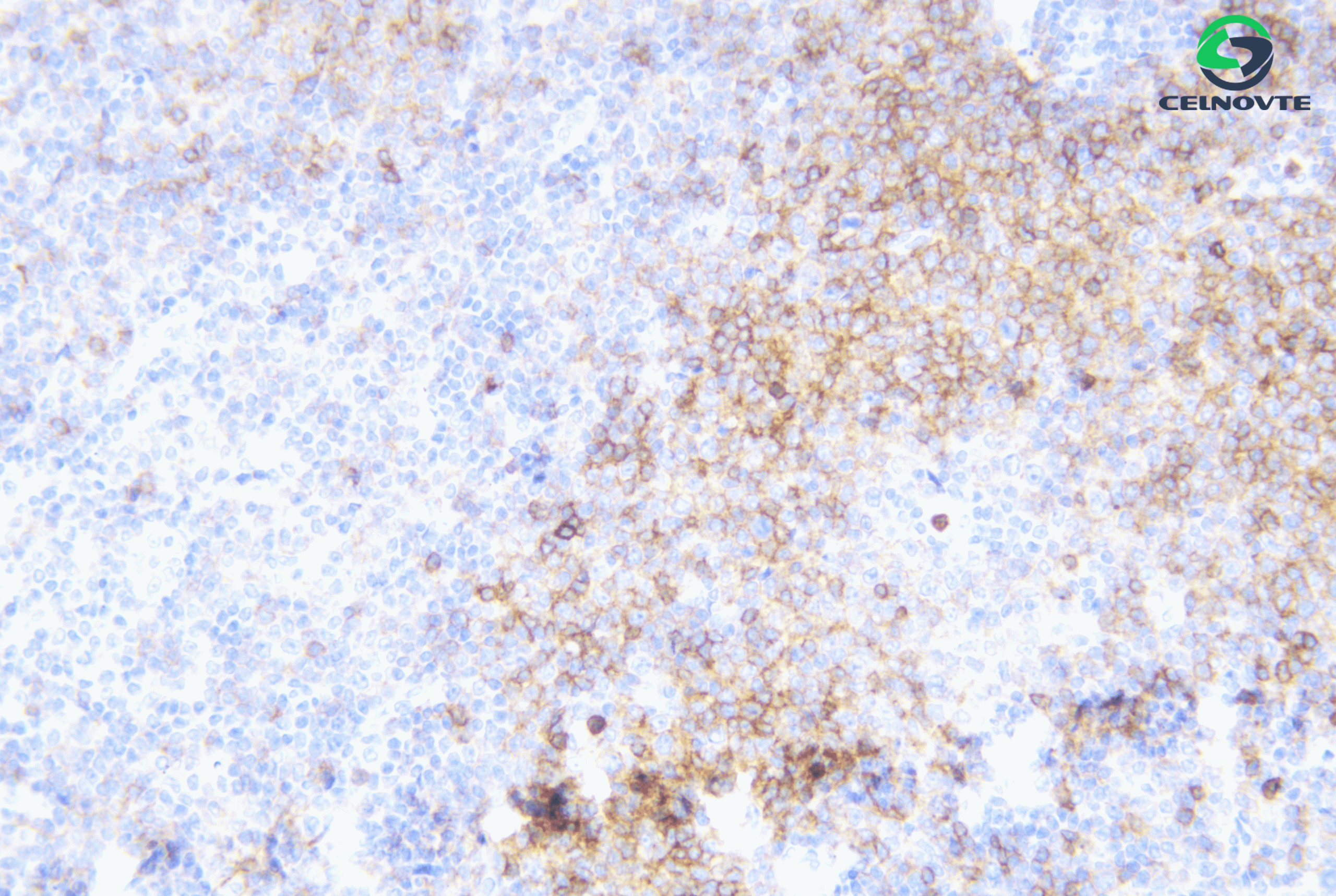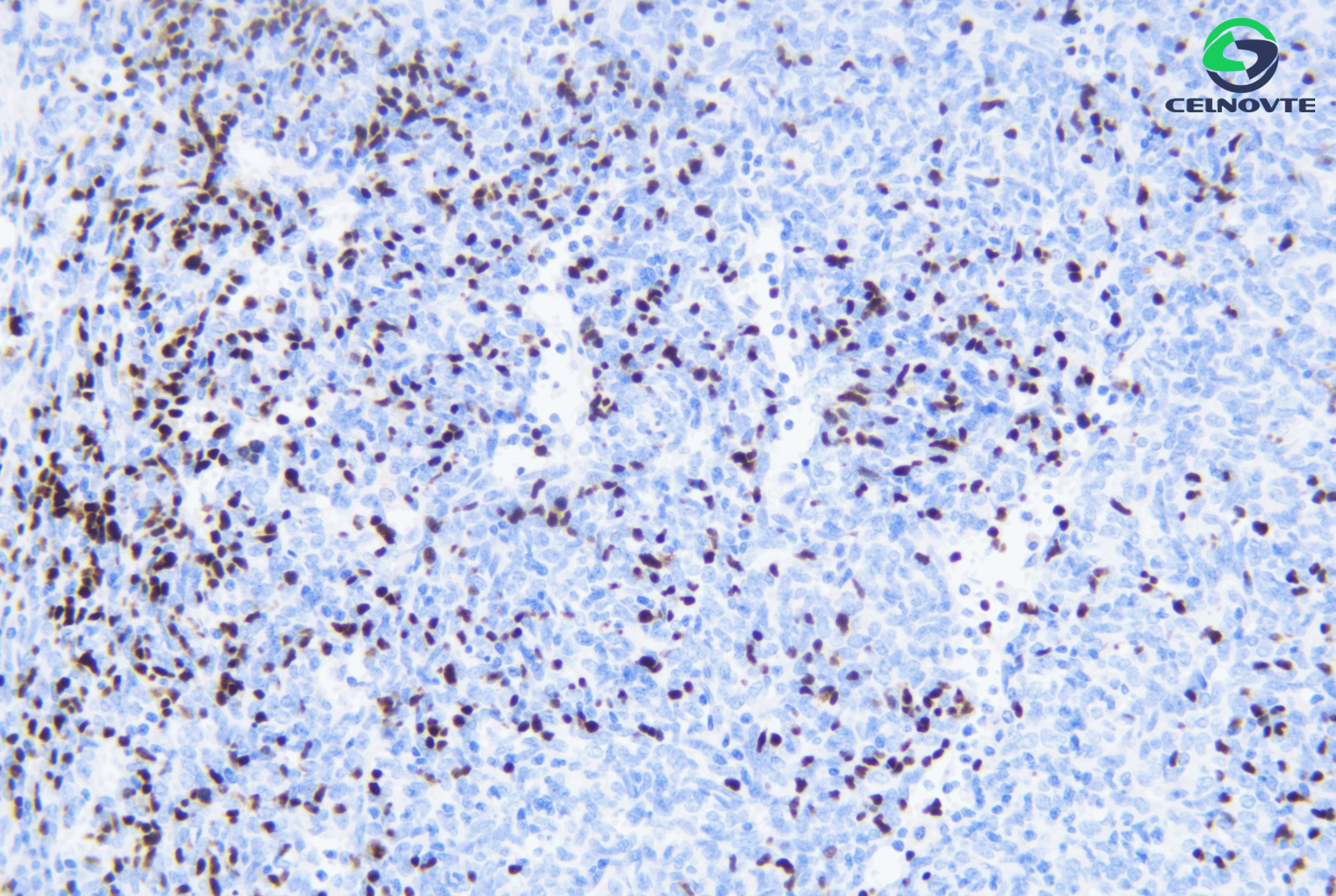-
Home
-
Product
-
IMMUNOHISTOCHEMISTRY
-
INSTRUMENT
-
MOLECULAR
-
HISTOLOGY
-
CYTOLOGY
-
DIGITAL PATHOLOGY
-
-
Solution
-
Support
-
About
-
Contact

Lymphoma Pathology
Hodgkin disease results in enlargement of the lymph nodes and spleen. Whereas Hodgkin disease generally has a high cure rate, non-Hodgkin lymphomas are often more difficult to treat. Burkitt lymphoma is a non-Hodgkin type.
It is known that CD3 and CD20 are homogenously expressed in T lineage and B lineage lymphoma, respectively. CD20 and CD3 are commonly used as specific markers of B and T lineage lymphomas, respectively.
Celnovte CD3(C3E7)-Lymphoma-200×
Celnovte CD20(C4A11)-Lymphoma-200×
Pathological examination is the main means of diagnosis of lymphoma. The pathological diagnosis of lymphoma requires comprehensive application of morphology, immunohistochemistry, genetics and molecular biology techniques, and flow cytometry, etc.
- Morphology: It is very important in the pathological diagnosis of lymphoma. Different types of lymphoma have characteristic and diagnostic morphological features.
- IHC: It can be used to identify immunophenotype of lymphoma cells, such as B or T/NK cells, tumor cell differentiation and maturity, etc. By combining with related IHC markers, differential diagnosis of different pathological subtypes can be performed.
Celnovte CD5(C6A10)-Lymphoma-200×
Celnovte CD10(C6D1)-Lymphoma-200×
Celnovte TDT(C2C8)-Lymphoma-200×
More deteils https://www.celnovte.com/product-center/?cat=5
Contact us on email info@celnovte-bio.com
- FISH (fluorescence in situ hybridization) detection technology:It can find specific chromosomal breaks, translocations, amplifications, etc., which have guiding significance for the auxiliary diagnosis of specific chromosomal abnormalities related lymphomas, such as Burkitt lymphoma t(8;14) translocations, follicular lymphoma t(14;18) translocation, etc.
More details https://www.celnovte.com/product-center/?cat=10
Contact us info@celnovte-bio-tech.com


